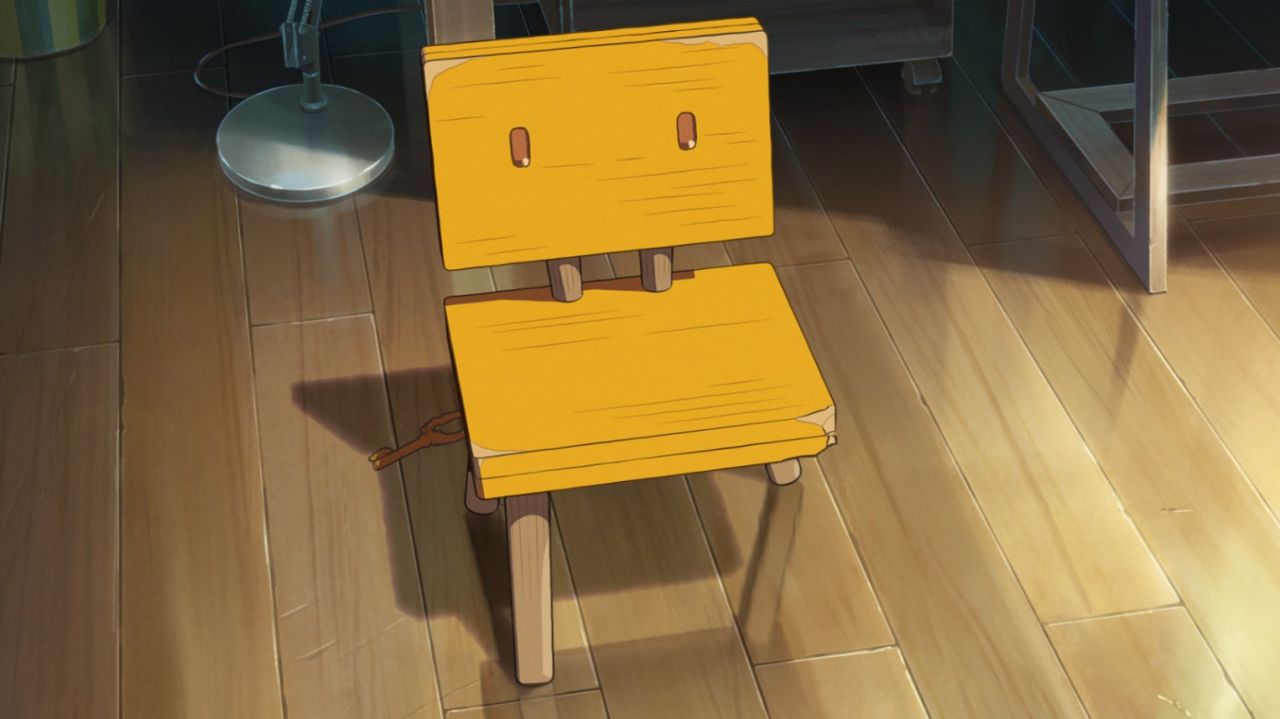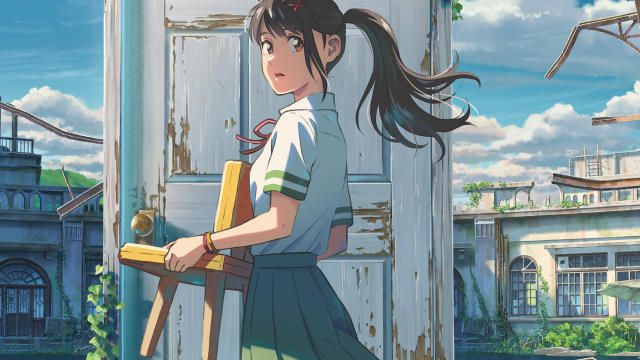In the middle of an abandoned onsen, a door opens into another world. This idea propels Suzume, the latest anime film from writer and director Makoto Shinkai, known globally for works like the hugely successful Your Name and Weathering With You.
When Suzume (Nanoka Hara) accidentally unlocks that door by removing a keystone (which changes into a mischievous cat), she is set on a mission to lock extra-dimensional doors across Japan, hoping to prevent a huge, worm-like monster from crashing onto the surface. She’s helped along by a young man — Sōta — whose soul becomes fused with the chair Suzume’s mother made for her as a child.
Suzume takes a lot of what people love about Shinkai’s work and develops a more mature, if somewhat predictable story. The art, and especially the backgrounds, are incredible; the nuances of emotion that the film is trying to relate are incredibly impactful; and the music is a sweeping tour de force. The strange world that Suzume visits — the other-world where the monster is secured for the safety of Japan — brings an insight and independence sometimes ignored in anime in favour of friendship or love.
Suzume’s biggest strength lies in its ability to relate deeply human experiences through supernatural metaphors without losing sight of the very real world setting. The worm, which has no motivations except a primal need to escape its bounds, is an uncontrollable force of nature. It emerges from abandoned, lost places, seemingly driven forward by the loss of connection, the lack of human activity in these places that serves as a gateway for the resentment, anger, and fear represented by the worm. Very few people can see this worm (it is a metaphor, after all), but its effects on the various cities and towns of Japan are very much felt across the landscape. Much like Weathering With You, natural disasters and weather are the consequences of supernatural interference, but only specific people — named Closers — understand how the worm has the potential to destroy everyone’s lives, and are tasked with keeping it secure.
With family drama, a love story, an afterlife, a mischievous cat-spirit, and two different search-and-rescue missions, Suzume’s pace is slightly frenetic, only occasionally revelling in slower moments. But it’s these interactions with random passers-by that really highlight the communal responsibility that the film seems to imply is necessary to stop the worm — whatever the worm really is. Suzume’s movements through Japan are marked by vignettes of kindness and understanding, as if she has become a stand-in for the people that everyone has lost throughout their lives. She becomes the people that the characters want to save, rescue, and help because they don’t have any more opportunity to do so for their lost loved ones.
Suzume’s romance is… less than charged throughout the film, mostly because the object of her affection is a literal object. Sure, Sōta is the kind of moody but exceptionally handsome college kid you expect a high school girl to crush on, but the absolute absurdity of Suzume kissing the back of the three-legged chair he’s trapped inside is unmatched. The film takes romance tropes that might have been presented as dangerous or unsavoury distractions to the plot and reduces them to connections — emphasising that in Suzume, as in many other anime films, the love a main character feels for another character is reduced to a motivation, and is not actually the point of the film.

As Suzume travels, closing the doors to the afterlife/other-world and preventing the worm from wreaking havoc, she realises her rare ability to see the worm is because she has gone into the realm of the afterlife before: a tsunami hit her hometown as a child, killing her mother and leaving Suzume abandoned. She comes to understand that she must return to this floodplain and release herself from the trauma of that moment. These scenes are incredibly touching and poignant, and the voice actors truly earn their roles with the moments inside this other plane. The imagery of this other world might be forgettable, but the story really comes together in this space, which feels like a memory, like the future, and like healing, all at the same time.
Ultimately, Suzume is held back by the scope of the mythology it attempts to present. The focus on Suzume as a person, who she is and what drives her, is the most compelling part of the film. Amid gorgeously sweeping landscapes, strangely haunted and lovely decaying urban settings, and world-ending stakes, Suzume stands out as a heroine who saves herself, and later saves the world as a consequence of putting her own healing, emotions, and love first.

Leave a Reply